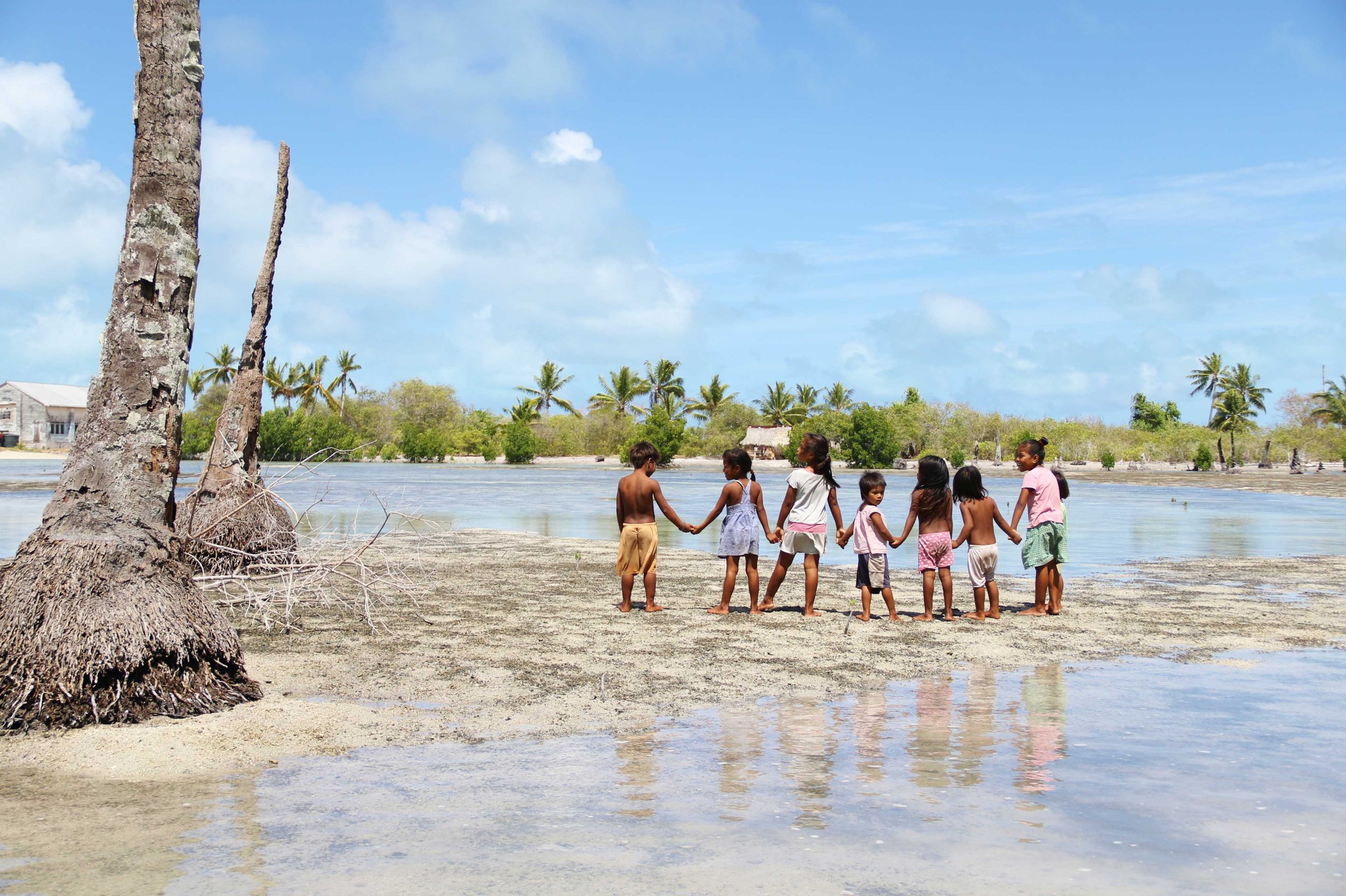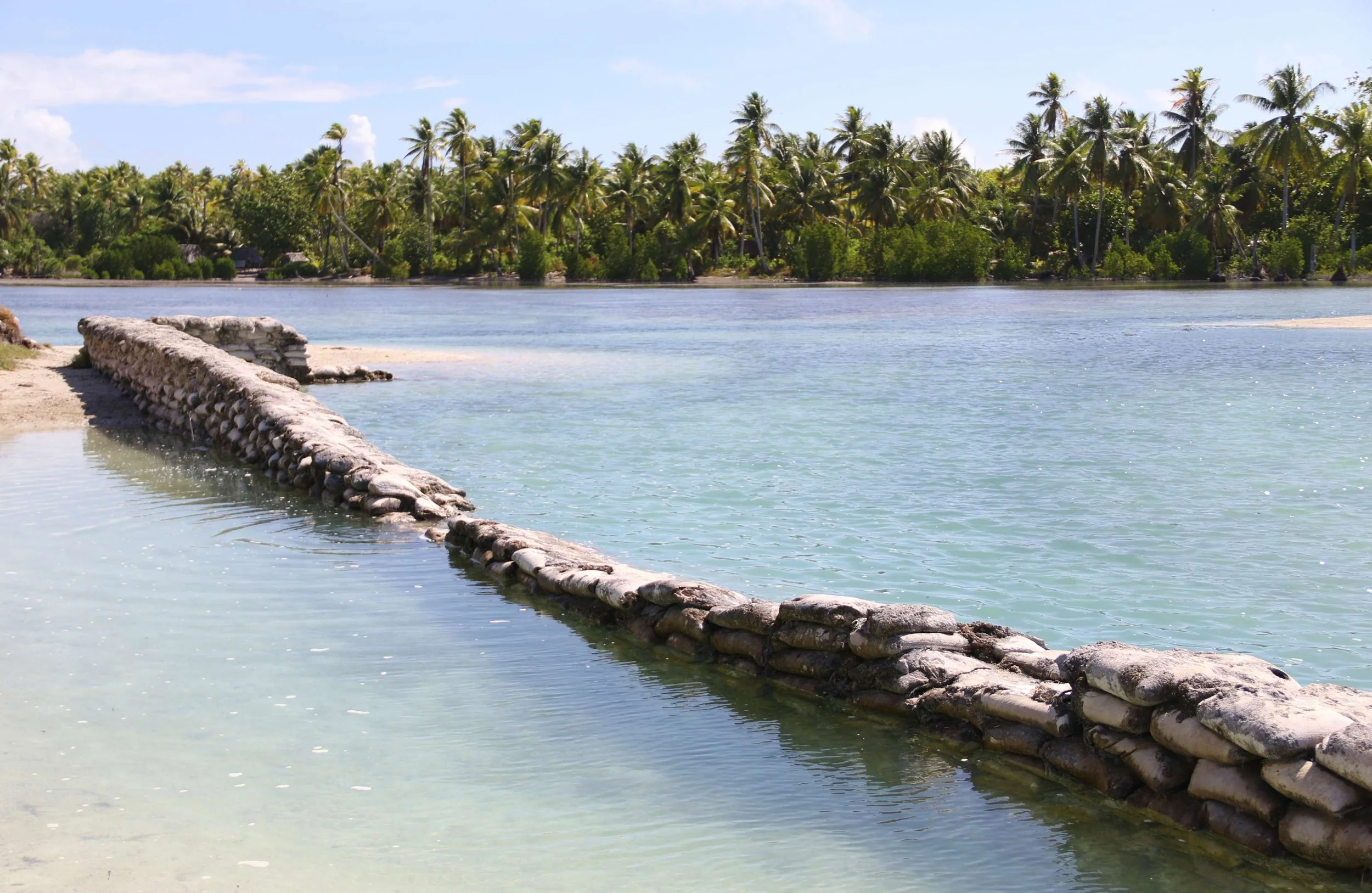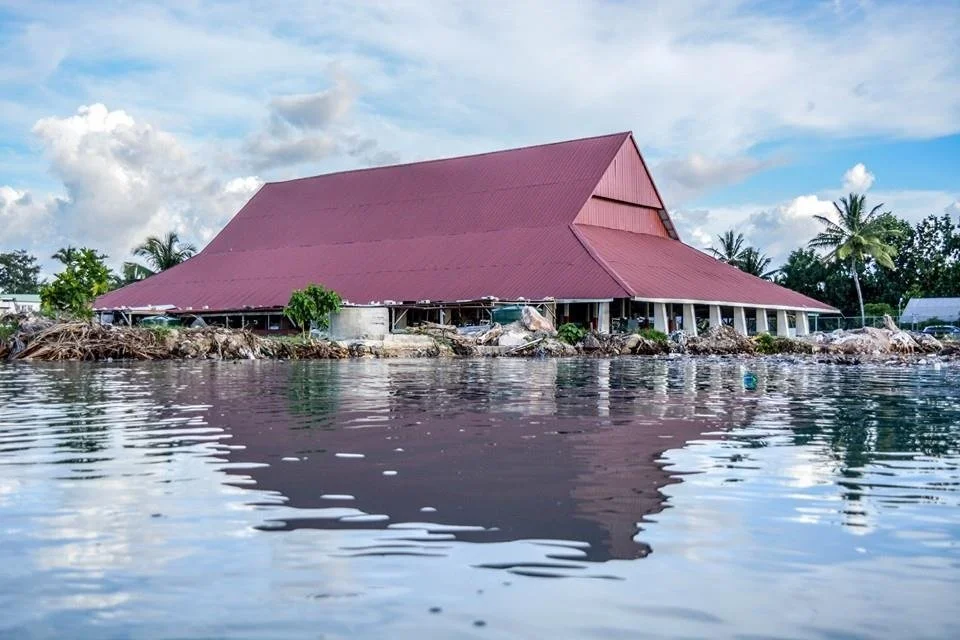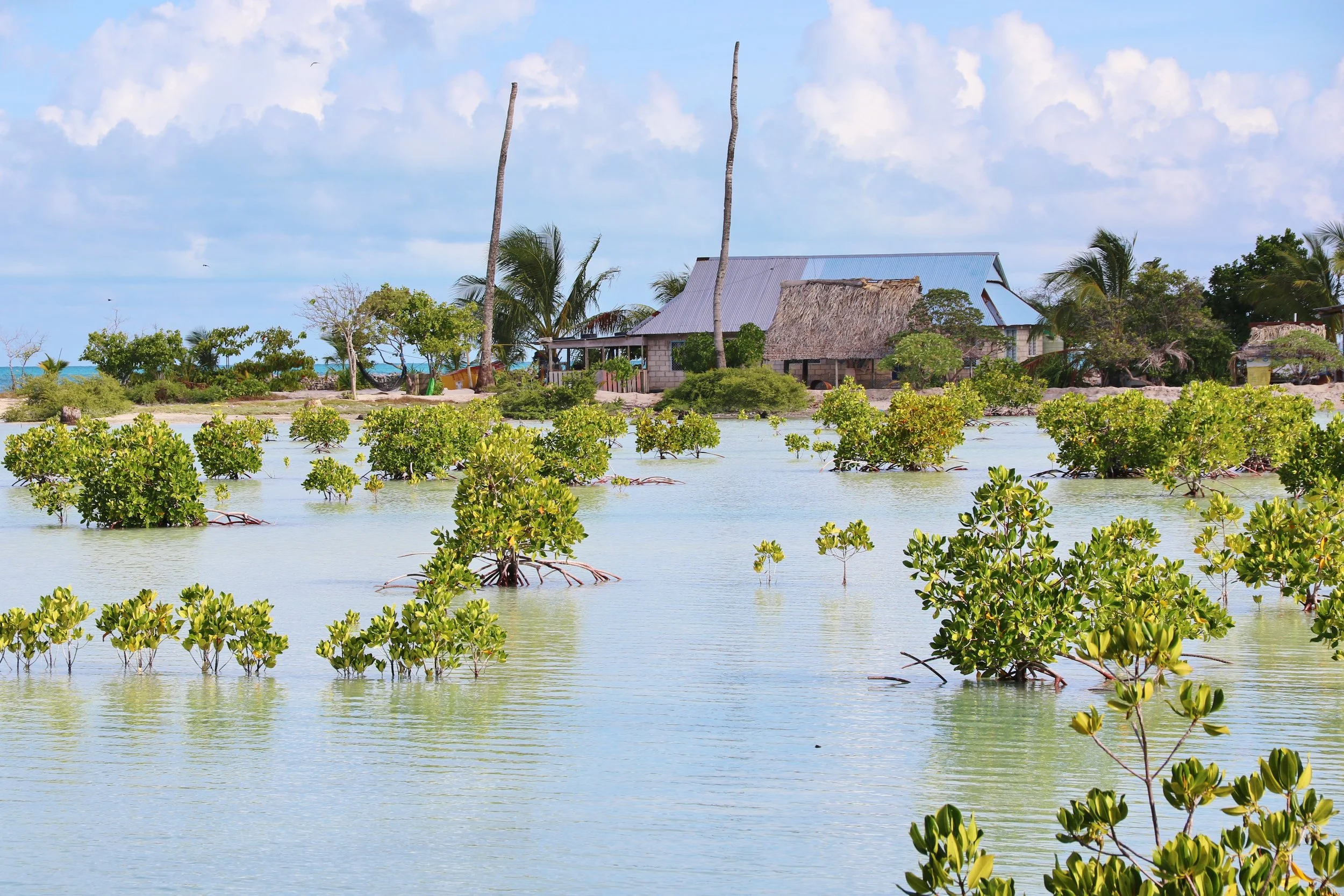
Climate Change & Sustainability
Hearts Above The Sea (HATS) recognises that Kiribati and islands in the South Pacific are currently facing drastic consequences as a result of Climate Change. Rising sea levels, coral bleaching, king tides, freshwater issues, coastal erosion, difficulty growing vegetation, and increasing storm severity are common occurrences.
Villages are flooding with high tides and many homes have had to move back from the shore to be rebuilt on higher ground. Scientists predict that Kiribati has between 10 to 20 years before the entire island nation is forced into displacement due to climate change.
Our goal is to increase awareness of the human impact of climate change in Kiribati and to educate children worldwide through the eyes of their peers in Kiribati. Children in Kiribati will get to share their beautiful and unique culture with the rest of the world, whilst also shining a light on living with some of the consequences of Climate Change.
The highest point on South Tarawa in Kiribati is 3m high. Tarawa is the capital of Kiribati where over half of the population reside.
Climate Change Impacts
Rising Sea Levels
The high tide surrounds the sea walls once built in the now-flooded and displaced village, Tebunginako. HATS 2018.
The highest point on any island in Kiribati is just 3m above sea level. Their existence is currently threatened due to rising sea levels as a result of climate change. Hundreds of people have already had to relocate to other parts of the islands due to the rising sea levels. To deal with this in the short term, sea walls have been built in vulnerable areas to keep waves and king tides out. The Tebunginako village of Abaiang has been displaced due to high tides flooding the land. Over 300 people used to live in the space that is now completely covered by water.
King Tides
Over the last decade, there have been more frequent and higher ‘king tides’ in Kiribati and lower-lying nations in the South Pacific. In February of 2015, there was a particularly intense high tide in Kiribati. A reporter noted, ‘for the locals, there was nowhere to go as the waves left a trail of destruction, flooding the hospital in Betio, destroying food crops and fouling the already severely limited freshwater lens” (Packard 2015).
Despite the destruction from king tides, the people of Kiribati continue to improve resilience to climate change effects by installing rainwater harvesting systems, building sea walls, planting mangroves, and strengthening government and community capacity in the form of locally managed Adaptation Plans and a national Coastal Management Policy.
Flooding from a king tide event in Kiribati in 2017. Photo credit: Mike Roman, Humans of Kiribati
Coastal Erosion
A mangrove plantation in South Tarawa. HATS 2018.
All of Kiribati is within a few minutes walk of the ocean. The people of Kiribati are experiencing large-scale coastal erosion on their beaches but also on their land. Due to this, and rising sea levels, some people are now displaced from their original homes. Coastal erosion is impacting the single main road on a causeway that connects the parts of Tarawa (the main island) together.
To try and tackle coastal erosion and to encourage flourishing coastal ecosystems, mangroves have been planted in some problem areas. Various government projects have supported mangrove planting over the past decade. Thousands of mangroves have been planted (particularly by youth) and maintained by the community. Mangroves are an important habitat for coastal ecosystems, encouraging fish and crabs to flourish. This is particularly important for Kiribati people, as a large part of their diet comes from the sea.
Coral Bleaching
As temperatures in the oceans rise, coral bleaching becomes more prevalent. In Kiribati, there is already widespread coral bleaching which is affecting the amount of fish available in the region. As the coral dies, fish move to cooler parts of the region. If coral health is declining, fish abundance will decline as well.
Hear Michael, a Kiribati teenager, share about his thoughts on coral bleaching in this video…
Salinated Drinking Water
A well which has been salinated. HATS 2012.
Rising sea levels, drought like conditions, and king tides are affecting Kiribati’s fresh water supply. Fresh water has been traditionally sourced from wells which tapped into the limited groundwater lenses of the coral atolls and islands of Kiribati.
Due to rising sea levels and king tides, many of the wells have become contaminated with salt water and can no longer be used as a water source. As the land area size is reducing so is the size of the water lens which currently, in South Tarawa, can only support half of their 40,000 residents.
In recent years Kiribati has ‘experienced unusual and extreme drought-like conditions, even during what has traditionally been the rainy season. As a result rainwater catchment has been greatly reduced (Office of the President, Republic of Kiribati). The groundwater supply of South Tarawa can currently only support half of their 40,000 residents.
Difficulty Growing Vegetation
Coastal erosion, rising sea levels, higher soil salinity, lower soil fertility, and reduced freshwater levels mean it is harder to grow vegetation in Kiribati. Traditional plants such as coconut trees are struggling and dying in some places of the island.
This has also increased the prices and lowered the availability of fresh produce. For example, in Kiribati in 2018, it cost $15AUD for one medium-sized pumpkin (it would have cost $3 in Australia).
In the past few years, innovative vegetable gardens made from raised pipes have emerged on the island. The pipes are on raised racks which keep them from salination and sea crabs that cause damage to the crops. Innovation in farming in low lying nations in the south pacific is an area for attention.
Coconut trees which have died in Eita, South Tarawa, Kiribati. 2014. Photo credit: Mark Roman, Humans of Kiribati.
Want to get involved with HATS and make an impact on Climate Action?






